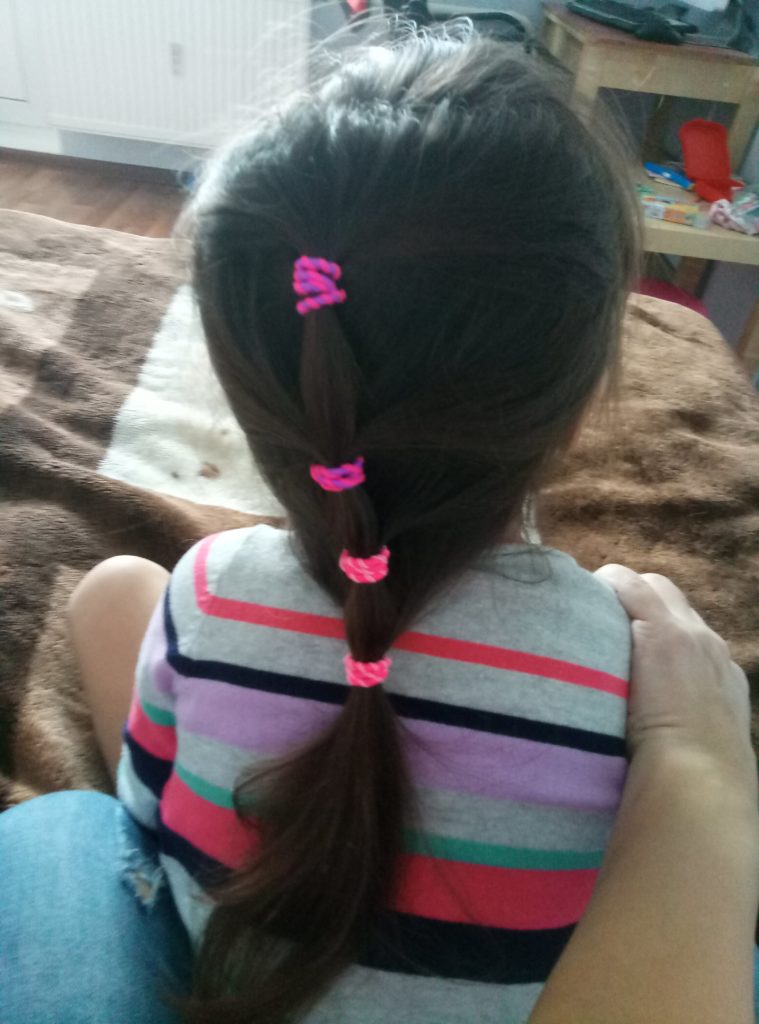Is it worth taking care of the appearance of a disabled child?

The first hairstyles of Alice, I constantly photographed
As a staff training specialist, I often conducted sales training. In the process of training, we always said that the first impression can not be made twice and it develops in the first 10 seconds of communication. That is why appearance plays a very big role in direct sales. Our clothes help not only to make a good impression on others, but also helps to tune in a certain way. We had a situation when the lady could not master cold calls in any way (this is when we call a potential client, the purpose of such a call is to interest and make an appointment). Long have we struggled with it, and, like, the training speaks well, confident, questions answered, and when calls to customers result is zero. They began to thoroughly analyze what and how she does, it turned out that she makes calls when her husband spends at work, and children in school. Who sees her on the phone? Nobody. Why preen, wear a suit? It’s silly to sit in the kitchen in full dress. So she called customers, being dressed in all home, and in parallel had time to cook dinner, do the cleaning and watch TV. We agreed that before we started calling, she would clean herself up, put on a suit, do her hair, apply makeup, sit down at a clean table and take a work diary. And, you know, it went. Of course, she immediately turned into a super-salesman, but she had the results of work, and this is very spurs to further action and brings positive emotions.
Why me? At the word disabled child many have associations not the most pleasant. It happens that the child can not walk, or control salivation, or does not tolerate the process of combing, there are a lot of options, of course all this leaves an imprint on his appearance. It happens that the child does not care how he looks, he hardly realizes himself. But in any of these cases, I believe that taking care of his appearance is very important. Clean, neat clothes, washed face, combed hair allow the child to look nicer in terms of perception of others. With the help of accessories, you can level out some features, for example, beautiful neck scarves help to brighten up the process of salivation, by the way, they are protected from moisture. It happens that the child constantly pulls something into his mouth, he needs to chew something, and it must necessarily be inedible objects. When an infant does it everything looks quite natural, but if it is a child who is 10 years old it immediately catches the eye and causes questions or bewilderment. For such cases, there are special items made of safe materials and made in the form of, for example, cookies. There is a child, nibbles cookies-quite a common situation, not attracting attention. Such auxiliary things are now possible to buy, at least on the Internet, and you can do it yourself. Clothing does not have to be the most fashionable or branded, it may even have got a child from an older brother or sister, but it must be whole, clean and harmonious.
I am not saying that we should mask and hide the special behavior or appearance of the child, but we all live in a society and constantly evaluate others themselves and act as the subject of evaluation for others. The positive attitude of others to a child with developmental disabilities depends, among other things, on his appearance, at least for the first few seconds exactly. In addition, a neat appearance is another reason for parents to be proud of their child and themselves. The child gradually gets used to the fact that you need to take care of yourself (all situations are different, someone may never do it completely on their own will not be able to, and someone will take care of himself will be himself). The habit of washing in the morning, brushing your teeth, wearing clean clothes, all this greatly affects the social adaptation of the child. And all this parents can teach him themselves. Yes, slowly, Yes, maybe, consulting with experts, but household skills, in my opinion, are in the competence of parents.
It has always been important to me that my daughter with autism spectrum disorder (I have written about our diagnoses here and here) fits into the society of the children around her as organically as possible. A huge victory was that I taught her to wear hairstyles (before to put her hair in order was very difficult, she does not tolerate touching the head). In the first place. When she comes home she removes the rubber bands from her hair and puts them back in place. Autistic children have a love of rituals, their world must be constant and they often suffer changes negatively. This can be used as a big plus. I taught Alice, undressing things to put in the washing machine, before going to bed to clean up the toys, to spread the bed, to clean up the plate in the sink (she, however, throws it there with all the dope, but the main thing-the result) and now it’s all part of her orderly world. All these actions she now performs independently and very meticulously. I think that in her later life, these skills will be useful to her.
We always want others to have our child evoked a pleasant impression, it does not matter whether the child has problems in development or he is absolutely healthy. And appearance is one of the means of creating a positive impression. I believe that this is very important and, among other things, leads to the formation of a positive attitude towards people with disabilities on the part of others.
Comments: